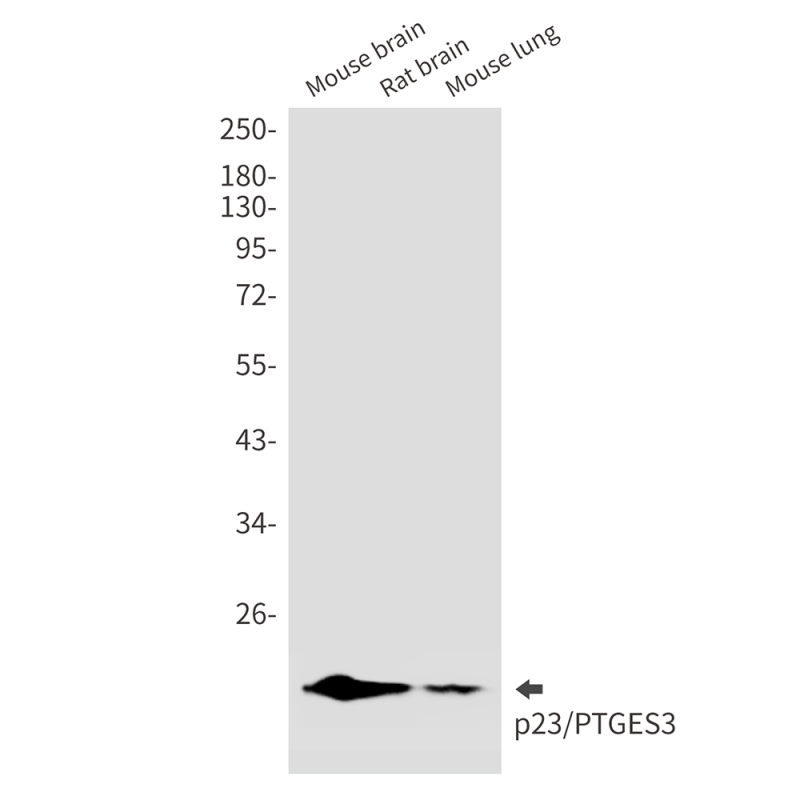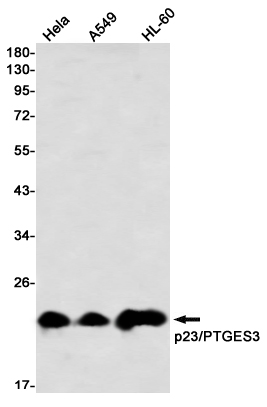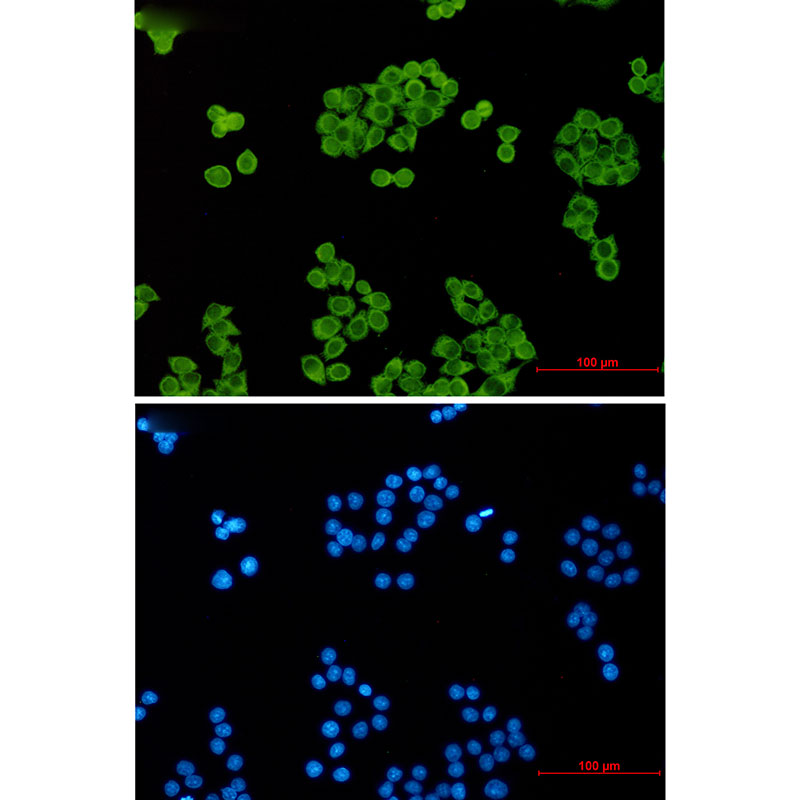


| WB | 1/500-1/1000 | Human,Mouse,Rat |
| IF | 1/20 | Human,Mouse,Rat |
| IHC | 咨询技术 | Human,Mouse,Rat |
| ICC | 1/50-1/200 | Human,Mouse,Rat |
| FCM | 咨询技术 | Human,Mouse,Rat |
| Elisa | 咨询技术 | Human,Mouse,Rat |
| Aliases | PTGES3; P23; TEBP; Prostaglandin E synthase 3; Cytosolic prostaglandin E2 synthase; cPGES; Hsp90 co-chaperone; Progesterone receptor complex p23; Telomerase-binding protein p23 |
| Entrez GeneID | 10728 |
| WB Predicted band size | Calculated MW: 19 kDa; Observed MW: 23 kDa |
| Host/Isotype | Rabbit IgG |
| Antibody Type | Primary antibody |
| Storage | Store at 4°C short term. Aliquot and store at -20°C long term. Avoid freeze/thaw cycles. |
| Species Reactivity | Human,Mouse,Rat |
| Immunogen | A synthetic peptide of human p23/PTGES3 |
| Formulation | Purified antibody in TBS with 0.05% sodium azide,0.05%BSA and 50% glycerol. |
+ +
以下是关于p23抗体的3篇代表性文献(虚构示例,仅供参考格式):
1. **文献名称**:*p23 regulates Hsp90 ATPase activity through a client-dependent interaction mechanism*
**作者**:Smith, D.F. et al.
**摘要**:研究揭示了p23作为HSP90共伴侣蛋白,通过结合其ATPase结构域调控客户蛋白(如甾体激素受体)的成熟,并开发了特异性p23抗体用于检测复合物动态。
2. **文献名称**:*Structural insights into p23-mediated HSP90 chaperone cycle*
**作者**:Johnson, R.T. & Brown, M.A.
**摘要**:通过冷冻电镜解析p23-HSP90复合物结构,发现p23在客户蛋白释放中的构象变化,利用p23抗体阻断实验验证其功能位点。
3. **文献名称**:*p23 overexpression in cancer: A biomarker study using monoclonal antibodies*
**作者**:Lee, S. et al.
**摘要**:开发高特异性p23单克隆抗体,发现其在乳腺癌和前列腺癌中高表达,提示其作为肿瘤预后标志物的潜力。
(注:以上文献为模拟内容,实际引用需检索PubMed或Google Scholar获取真实文献。)
The p23 antibody is a tool used to study the p23 protein, a conserved co-chaperone of the heat shock protein 90 (HSP90) complex. Discovered in the 1990s, p23 (also known as prostaglandin E synthase 3 or PTGES3) plays a critical role in stabilizing HSP90-client protein interactions during the ATP-dependent chaperone cycle. It binds transiently to HSP90 to facilitate the maturation of diverse client proteins, including steroid hormone receptors, kinases, and transcription factors. p23 is implicated in cellular stress responses, protein folding, and signal transduction pathways.
Research using p23 antibodies has revealed its involvement in cancer progression, neurodegenerative diseases, and immune regulation. Overexpression of p23 is observed in certain cancers, where it supports oncoprotein stability and drug resistance. Antibodies against p23 enable detection of its expression levels in tissues or cell lysates via techniques like Western blotting, immunohistochemistry, and immunofluorescence. These studies help elucidate p23's subcellular localization, interaction networks, and disease-associated dysregulation.
Recent studies also explore p23's non-chaperone roles, such as its involvement in chromatin remodeling and mRNA processing. The development of specific p23 antibodies has been crucial for distinguishing its functions from other HSP90 co-chaperones. However, functional diversity across cell types and technical challenges in antibody specificity remain areas of active investigation. Understanding p23 biology through antibody-based approaches continues to inform therapeutic strategies targeting the HSP90-p23 axis in precision medicine.
×